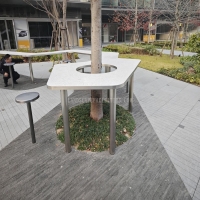Welcome to the website for landscape facilities products and knowledge.
How does the inclusion of a built-in step stool or ladder enhance accessibility for taller storage areas?
For homeowners with soaring ceilings and vertical storage solutions, reaching upper shelves often becomes a daily struggle. The integration of built-in step stools or ladders directly into cabinetry and storage units transforms this challenge into seamless functionality. These clever installations provide instant access to elevated spaces without the clutter of freestanding step ladders or the instability of makeshift solutions.
Built-in step mechanisms typically feature smooth-gliding tracks or folding designs that remain concealed when not in use, preserving aesthetic continuity while offering practical assistance. Unlike traditional step stools that require storage space and constant repositioning, integrated systems emerge precisely where needed – beneath kitchen cabinets, inside pantry doors, or alongside library shelves.
The safety advantages are particularly noteworthy. Engineering these steps with non-slip surfaces, appropriate tread depth, and secure locking mechanisms creates a more stable platform than portable alternatives. This stability is crucial when handling delicate items or heavy containers from height. Moreover, keeping step tools permanently positioned eliminates the temptation to use unstable substitutes like chairs or counter edges.
From an ergonomic perspective, built-in solutions accommodate users of varying heights and mobility levels. The consistent placement allows muscle memory to develop, making the reaching process more intuitive over time. This design consideration proves especially valuable for aging individuals or those with physical limitations who might otherwise avoid using upper storage areas.
Space optimization represents another significant benefit. By incorporating accessibility features into the storage system itself, homeowners reclaim floor space that would otherwise be occupied by movable steps or ladders. This approach aligns perfectly with modern minimalist trends and small-space living concepts where every square inch matters.
The psychological impact shouldn't be underestimated either. Accessible storage encourages full utilization of available space, reducing clutter in lower areas and promoting organizational efficiency. When people know they can safely reach every shelf, they're more likely to maintain organized systems and use their storage capacity effectively.
Modern iterations of these built-in solutions include innovative materials like lightweight composites, soft-close mechanisms, and even weight-sensing auto-deployment systems. Some high-end versions incorporate lighting elements that automatically illuminate when the step is engaged, enhancing both safety and convenience.
Ultimately, the inclusion of integrated step solutions represents a thoughtful convergence of design intelligence and practical functionality. It acknowledges the human scale within architectural spaces while maximizing the potential of vertical dimension – creating homes that are simultaneously more spacious, more organized, and more accessible to all occupants.
Related search:

Recommendation
An outdoor bar counter with stainless steel and terrazzo materials in an irregular shape